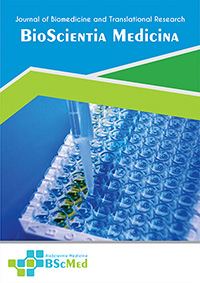Main Article Content
Abstract
Background: The Hughes procedure, or tarsoconjunctival flap, is a technique used in reconstructing full-thickness lower eyelid defects involving >50% of the eyelid margin to restore anatomical integrity, function, and cosmesis of the eyelid. The modified Hughes procedure spares the marginal upper lid tarsus and removes the levator muscle aponeurosis from the tarsoconjunctival flap. This study reports a case series of patients who underwent a modified Hughes procedure after basal cell carcinoma excision.
Case presentation: Two patients underwent lower eyelid reconstruction using the modified Hughes procedure. After a wide excision of the tumor, a tarsoconjunctival flap was created to reconstruct the posterior lamella of the eyelid. Subsequently, the anterior lamella of the eyelid was reconstructed using a full-thickness skin graft and an advancement flap, respectively. Both patients underwent a second surgery, tarsus flap release, 6-8 weeks after the first surgery. Postoperatively, tarsal flap apposition, skin flap/graft, and stitches were intact. After the tarsus flap release, wound healing was good. A tumor biopsy showed basal cell carcinoma.
Conclusion: The modified Hughes procedure is a treatment of choice in reconstructing full-thickness lower eyelid defects involving >50% of the eyelid margin. Full-thickness skin graft and advancement flap to reconstruct the anterior lamella of the eyelid are chosen after considering skin color, texture similarity, and the laxity of the eyelid and cheek.
Keywords
Article Details
As our aim is to disseminate original research article, hence the publishing right is a necessary one. The publishing right is needed in order to reach the agreement between the author and publisher. As the journal is fully open access, the authors will sign an exclusive license agreement.
The authors have the right to:
- Share their article in the same ways permitted to third parties under the relevant user license.
- Retain copyright, patent, trademark and other intellectual property rights including research data.
- Proper attribution and credit for the published work.
For the open access article, the publisher is granted to the following right.
- The non-exclusive right to publish the article and grant right to others.
- For the published article, the publisher applied for the Creative Commons Attribution-NonCommercial-ShareAlike 4.0 International License.





